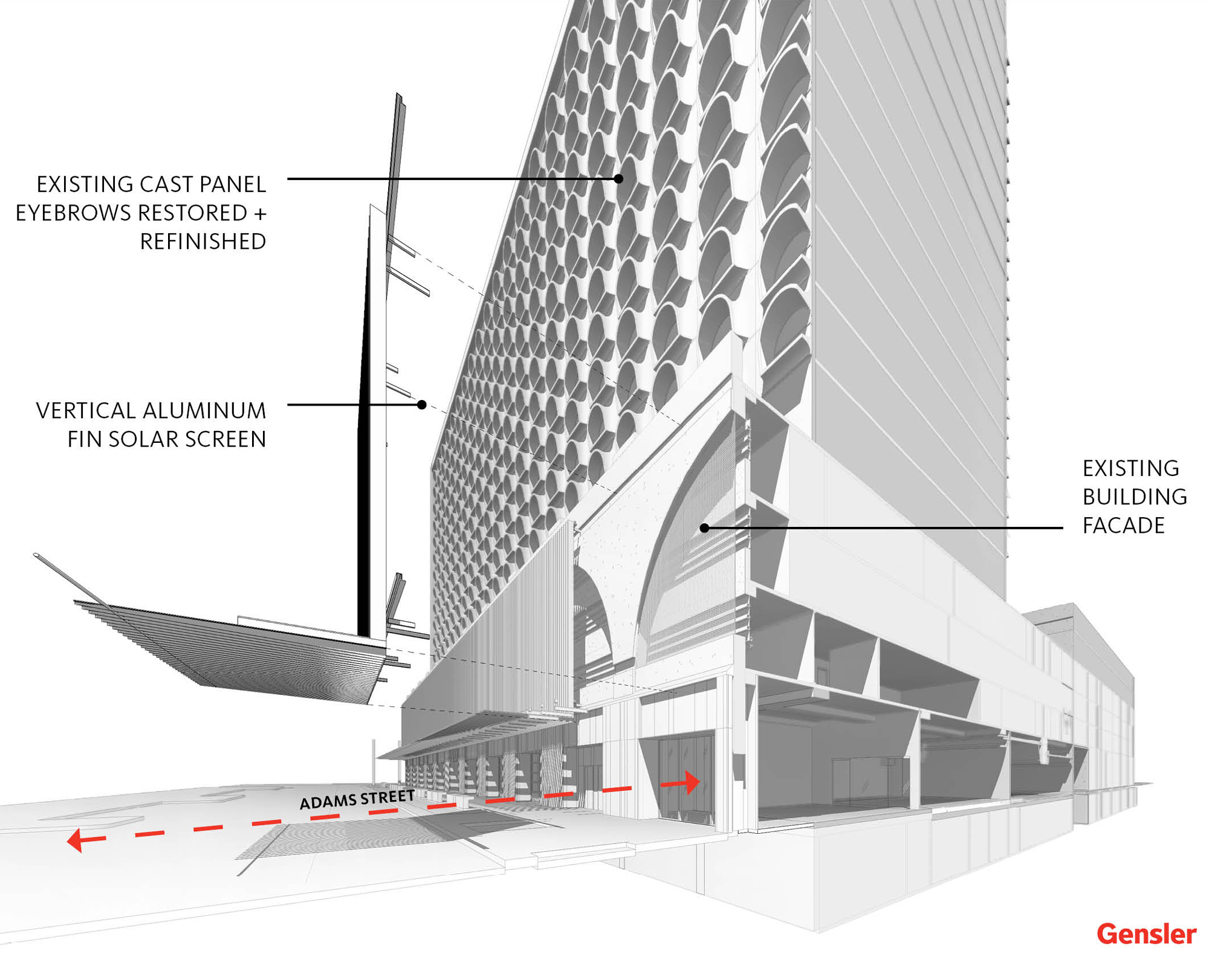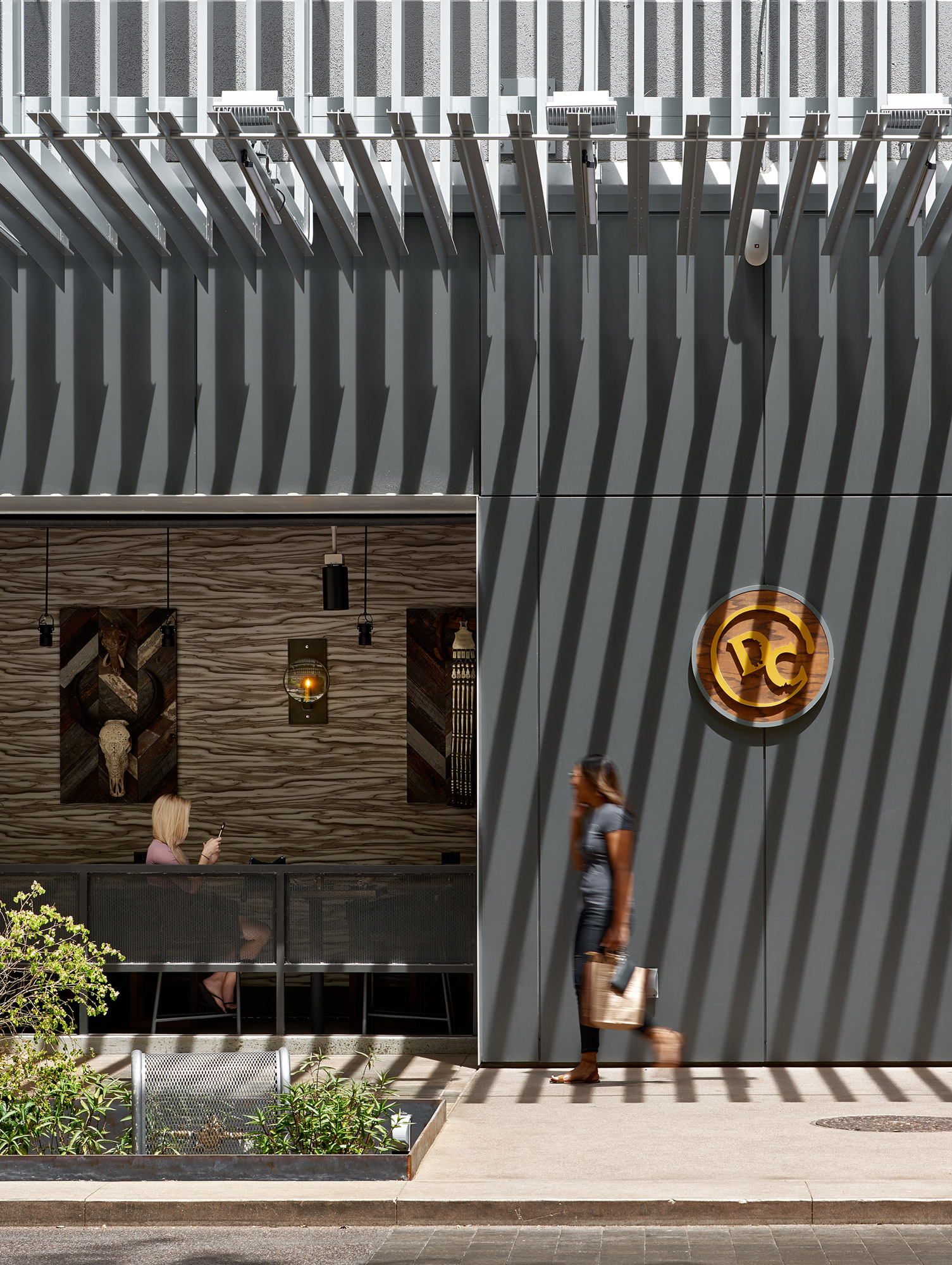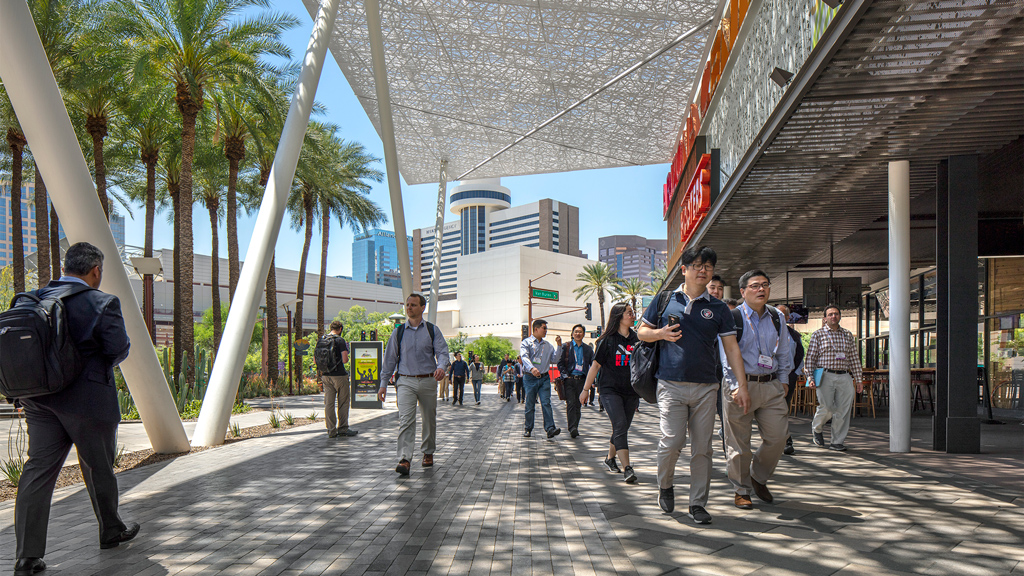Are We Ready for the Heat? Desert-Appropriate Strategies for a Resilient City of the Future
With rising temperatures and less precipitation, more than half of humans around the globe are anticipated to live in desert environments by 2030. As humans we are becoming a desert species. Rising temperatures and drought are becoming a “climate reality” — not only here in the Sonoran Desert where I live and work, but globally as well.
As Phoenicians and designers in this increasingly hot environment, we have the responsibility to lead by example and drive the effort in making Phoenix a resilient “City of the Future.”
Urban Sprawl and The Urban Heat Island EffectBeing one of the fastest growing cities has some economic advantages, but with that comes rapid urbanization. Urban sprawl is one of the drivers in exacerbating the Urban Heat Island Effect, which is the contributing factor in making our city hotter. Adding materials with a high heat storage capacity, like concrete and asphalt, traps a lot of heat on the ground during the day and leads to increased nighttime temperatures. What can be done to mitigate this? A few strategies such as adding shade, using permeable pavement as well as native vegetation can be employed. One case study is the Renaissance Phoenix Downtown Hotel Renovation and Adams Street activation project.

The new exterior screen, composed of locally produced aluminum fins, shades the sidewalk and creates a play of shadow, light, and striking repetitive patterns that enhance the pedestrian experience along Adams Street. Using native desert landscape, trees and greenery line the street in bioswale planters designed to capture rainwater runoff and provide additional shade.
Attractive new pavers replaced the standard downtown asphalt, promoting Adams Street as a walkable hub during special events and festivals. This alternative material absorbs much less heat, reducing the heat island effect.

Another local case study is the Arizona Center’s identity and gateway concept plan, which creates a fresh model for office, retail, and entertainment in a desert city like Phoenix.
In an effort to give more personality to the building and create shade for the outdoor seating, screens were added to the exterior, creating a new gateway to the center. Landscape is another important feature for the center. Native plants ornament the welcoming entry ways and the urban plaza. As you reach the central plaza, Southern live oak trees line the outdoor seating areas to provide a sense of place and, eventually, be a main source of shading. As the vegetation grows, the space will only become more of a haven for guests to find tranquility in the middle of downtown Phoenix.
Those are just a few examples of how to mitigate the Urban Heat Island Effect through desert-appropriate design strategies. In addition to creating cooler environments, these strategies enhance pedestrian experience and contribute to our health and wellbeing — making Phoenix not only a cooler environment but also a healthier one.
Global Warming and Carbon EmissionsWhile tackling the issue on the ground, growing smartly, and addressing the Urban Heat Island effect are important first steps in making Phoenix heat-ready, we must also address and understand the drivers behind global warming and climate change. Looking at embodied carbon, which is the carbon footprint of a material and operational carbon, which is the emitted carbon dioxide, when a building or systems are in operation, is of is great importance.
During a typical life span of a building 28% of carbon emissions are associated with embodied carbon and 72% are associated with operational carbon. Considering the materials we use, their production and delivery is key. We know that as architects and designers we can make a difference by designing buildings that are not only beautiful but high performing.
To make an impact we should reduce and reuse materials whenever possible, right-size and build only as much as we need, work with orientation and daylight, and focus on carbon emissions in everything we do.
By building only when we need to, at Gensler, we reduced 95% of embodied carbon emissions. By building only as much as we need to, by working with our clients, and employing strategies to truly understand how they use their space, we achieved 60% of space savings. By working with the sun, our designs lead to a 71% reduction in solar heat gain, 18% reduction in cooling load 17% in energy savings.
At Gensler, we are committed to achieving carbon neutrality in all our work within a decade. Our Gensler Cities Climate Challenge (GC3) is a rallying cry to our industry, our clients, and our colleagues towards taking immediate, aggressive steps to leverage the power of design to create a better world.
